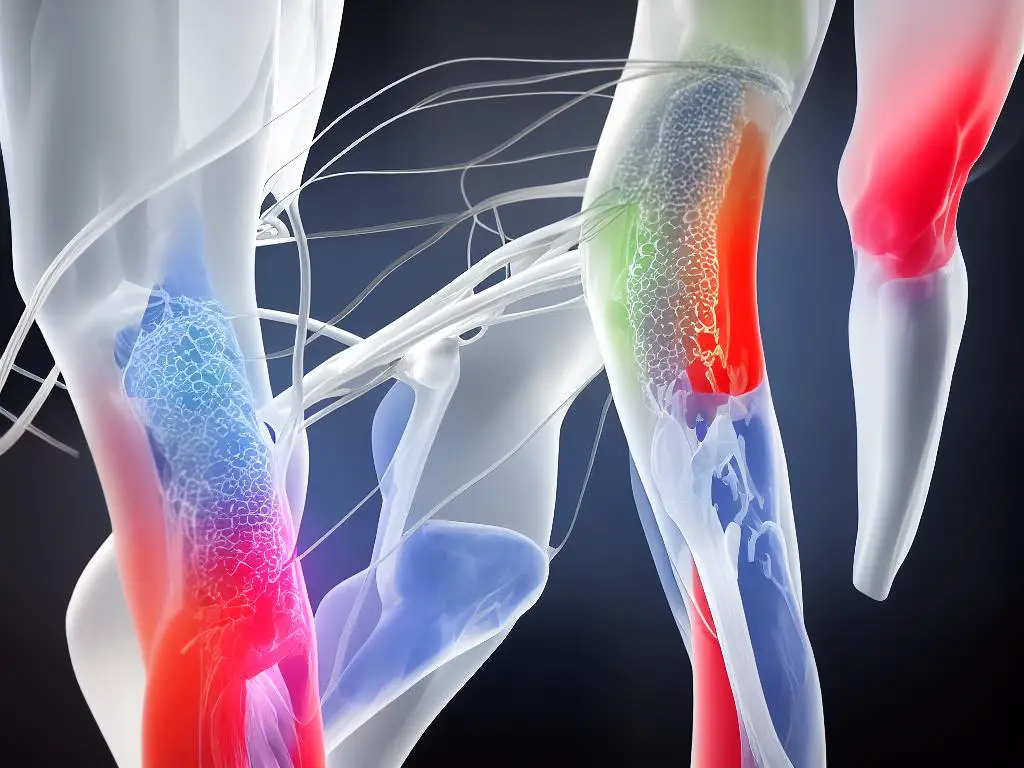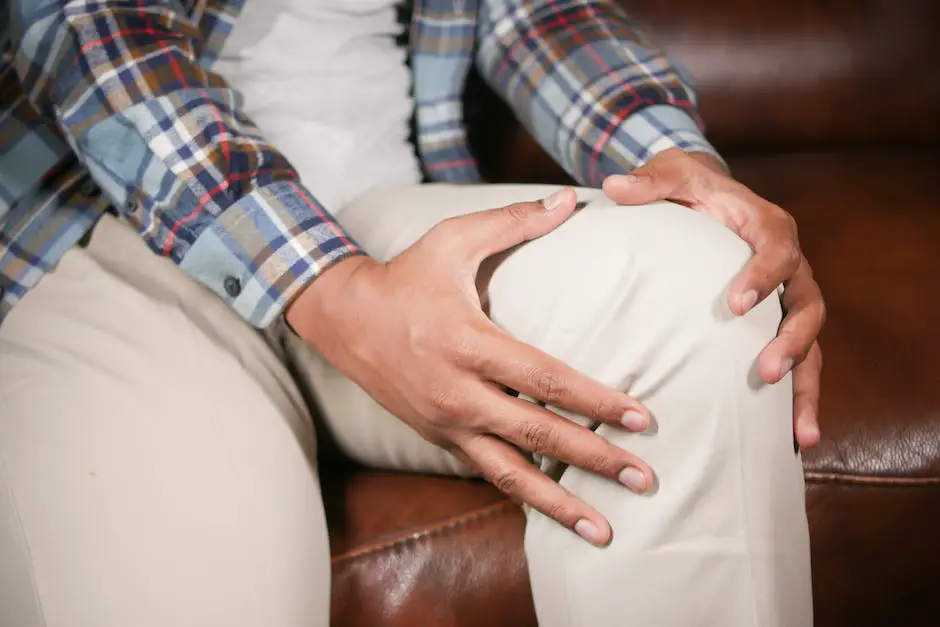Our bodies often communicate with us through sounds and sensations, and one such example is the snapping or popping noise you might hear from your knee when ascending stairs. This occurrence, albeit common, can be disconcerting, and the need to understand its root cause and implications becomes paramount. In this comprehensive overview, we aim to unravel the mysteries behind this phenomenon, delving into its potential causes such as knee joint strain, knee ligament laxity or patellofemoral pain syndrome. Furthermore, we decipher common symptoms, diagnoses, and several treatment and preventive approaches that aid in managing and potentially mitigating this issue.
What Causes Knee Snapping Sound
Understanding the Knee Function
To fully understand what causes knee snapping sounds, especially when ascending stairs, it’s essential to know the basic functioning of the knee. The knee, which is the body’s largest joint, consists of bones, ligaments, tendons, and cartilage. These components work together to ensure flexibility and stability during movement. Now these parts of the knee are prone to wear and tear, and they can also suffer damage due to injuries. This wear and tear or damage can lead to unusual situations such as knee snapping or popping when going up stairs.
Knee Joint Strain and Knee Snapping Sound
High levels of strain on the knee joint are among the potential causes of the snapping sound in your knee when climbing stairs. Stairs, being a high impact activity, significantly increase the pressure and strain on the knee joints. The knee is designed to handle a certain amount of stress, but when forced beyond its limits, you may experience a snapping or crackling sound. This is often associated with pain, discomfort and sometimes swelling.
Knee Ligament Laxity and Knee Snap
Knee ligament laxity is another common factor associated with snapping sound in the knee while going up a staircase. Ligaments are bands of tissue that connect the bones in your knee and control its movements. If the ligaments in your knee become overly lax or loose, they may snap back into place abruptly during certain movements, such as bending or straightening the knee. This sudden snap-back can produce a snapping or popping sound.
Patellofemoral Pain Syndrome
Another reason behind the snapping sound emanating from the knees while ascending stairs can be Patellofemoral Pain Syndrome (PFPS). This condition is also known as runner’s knee because it is common among athletes, but can also occur in non-athletes who frequently climb stairs or hills. The condition is characterized by pain in and around the kneecap, often with accompanying noises like cracks or pops. PFPS occurs when the cartilage under the kneecap wears down due to high-stress activities, causing the bones to rub against each other during movement and create these odd sounds.
It’s important to understand that hearing snapping sounds from your knee, particularly when climbing stairs, doesn’t necessarily indicate a serious health problem. In many cases, this snapping is simply a result of regular movement as tendons and ligaments slide over the surface of your knee. However, if the snapping sound is persistent and accompanied by pain, swelling, instability, or other worrisome symptoms in the knee joint, it would be prudent to seek medical attention. A health care professional can evaluate your knee through a physical examination or diagnostic imaging to identify the cause of the snapping sound and devise an appropriate treatment plan.

Symptoms and Diagnoses
Identifying Red Flags: Understanding the Auditory and Additional Symptoms of a Potential Knee Problem
The most significant indicator of an unusual knee condition is the audibly perceptible snapping or popping sound often heard while ascending stairs, referred to medically as crepitus. Along with the sound, you might also feel a grinding or crunching sensation inside the knee. In some instances, the knee may feel unstable, as if it could buckle under your weight. Pain might accompany these symptoms for some individuals, while others might not experience any discomfort whatsoever.
Additional symptoms might include swelling in the knee region or an apparent misalignment of your knee. Difficulties in straightening the knee fully or a tendency for the joint to lock during movement can also be indicative of a potential knee issue.
Severity: Understanding When Knee Snapping Is a Concern
The frequency and the level of discomfort associated with knee snapping could indicate a potential problem. Infrequent snapping or popping without any pain or swelling could be normal, resulting from pressure changes in the joint.
However, if the knee snapping occurs frequently and is consistent with every step during stair climbing, especially if it is associated with pain, swelling, or feeling of instability, it could indicate a knee injury or a developing condition such as a torn meniscus, arthritis, or kneecap misalignment.
Diagnosing Knee Snapping Sounds: When to see a Doctor
Should you encounter a snapping sound in your knee that causes worry or unease, it is crucial to consult with a medical professional. The evaluation typically begins with your healthcare provider inquiring about your symptoms, snapping frequency, any related pain or inflammation, and any known incidents of knee trauma or injury.
A physical assessment of your knee is likely to follow, allowing the healthcare provider to observe for any signs of swelling or sensitive regions, while also evaluating the range of motion within the joint. You may be asked to emulate normal activities such as walking or using stairs in order to better understand how your knee functions.
Consequently, diagnostic tests might be ordered. An X-ray can discern any presence of bone spurs, fractures, or arthritic changes, whereas Magnetic Resonance Imaging (MRI) could reveal soft tissue damages such as a meniscus tear or ligament rupture. The goal of these diagnostic procedures is to accurately identify any knee issues to promptly initiate relevant treatment or prevention plans, ensuring you can move without pain or discomfort.
It’s essential to communicate with a healthcare professional about your knee health concerns, especially if you consistently hear a snapping sound when you climb stairs.

Treatment and Prevention Strategies
Interpreting Knee Snapping Sounds
Noticing a popping or snapping sound in your knee while climbing stairs can be quite unsettling. The phenomenon is commonly associated with a condition known as crepitus. This can stem from gas bubbles popping in the knee joint, the snapping of tendons or ligaments over the bony structures of the joint, or the gradual erosion of the cartilage. While it can be an uncomfortable sensation, if it occurs without severe pain or swelling, it’s usually not a cause for alarm and is a normal aspect of aging.
However, if the snapping sound is accompanied by pain or swelling, it can signal a more serious underlying issue that warrants immediate medical attention. Therefore, understanding these sounds is key to ensuring the overall health of your knee.
Treatment of Knee Snapping Sounds
The treatment for knee snapping noises heavily relies on the root cause of the problem. Lets delve into the potential treatment methodologies based on the causative factors:
Physical Therapy
If your knee snapping sound is caused by an alignment issue or muscle imbalance, physical therapy might be recommended. The therapist will design an exercise regimen to strengthen the muscles around the knee and improve mobility. Techniques such as stretching, massage, and ultrasound therapy may also be introduced to alleviate the symptoms.
Medication
In cases where the snapping is due to mild inflammation or swelling, non-steroidal anti-inflammatory drugs (NSAIDs) can be used to relieve the symptoms. Topical applications such as gels and creams, containing anti-inflammatory properties, can also be helpful.
Surgery
In severe cases, when knee snapping is a result of structural problems in the knee joint such as torn cartilage or ligament, surgery might be required to rectify the problem.
Prevention and Mitigation Strategies
Prevention or mitigation of knee snapping is a primary strategy in managing this condition. Below are several methods that can help:
Regular Exercise
Regular knee exercises that help retain knee flexibility and strength can prevent snapping sounds. Low-impact exercises, such as cycling, swimming, and yoga are particularly beneficial.
Adequate Rest
Rest is very important to prevent any further injury to the knee joint. Avoid overuse of the knee joint and take frequent breaks especially if you engage in intense activities.
Weight Management
Maintaining a healthy weight is imperative as excess body weight can put undue strain on the knee joints leading to problems like knee snapping. A healthy, balanced diet combined with regular exercise can help maintain an ideal weight.
Use of Supportive Gear
Those with frequent knee problems can benefit from using knee braces or compression sleeves to provide support and reduce the stress on the knee joint, thereby preventing the chances of a snapping sound.

After deep-diving into the causes, symptoms, diagnosis, and treatments of the often disconcerting knee snapping sound, it becomes clear that although this phenomenon is somewhat common, it should not be overlooked. From understanding the underlying medical reasons to recognizing symptoms and seeking professional help, every step is crucial towards one’s well-being. Moreover, the range of treatments and prevention strategies, including physical therapy, medication, and lifestyle changes, emphasizes the importance of a comprehensive, proactive approach to health. With this rounded understanding, one can make informed decisions regarding their bodily signals, fostering a life where stairs are less of a “snap” and more of a stride.





























































